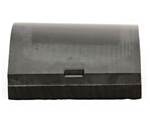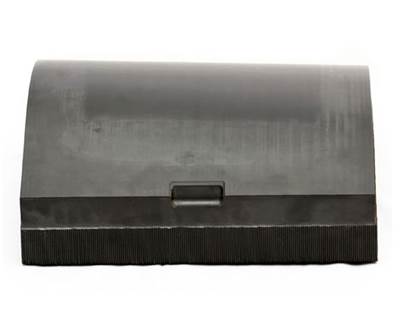Postprocessing Composite Tooling: Machining, Coating or Combination Strategy?
A project testing the surface finishing options for composite tooling reveals insight about machining and coating strategies.
It’s been said that tooling is the lowest hanging fruit for applying additive manufacturing. At the most recent Additive Manufacturing Conference, Zeke Sudbury of Cincinnati Inc. painted a picture of how to grab that fruit when it comes to big area additive manufacturing (BAAM) in composite tooling.
BAAM is a large scale, industrial approach to AM, but at its core is just an FDM machine with a build area of 8 feet wide by 20 feet long by 6 feet high (2.5 by 6 by 2 meters). The system has a bead diameter of ¼ inch and offers speeds of 80 pounds (40 kg) per hour and 10 to 20 inches (250-500 mm) per second using inexpensive pelletized feedstock in an open material platform. What makes BAAM unique is that it can use filled polymers, such as ABS filled with carbon or glass fibers.
This capability and the system’s size make it suitable for producing fiber-reinforced tools for composite molding. A fiber-reinforced composite tool consists of a mold topped with a protective surface coating followed by a mold release and then a fiberglass composite on top. Composite tools are typically very slow to produce, but BAAM makes it possible to print the tool in one day. Essentially, the system enables skipping the “plug” step of traditional composite tooling.
However, to assess BAAM for composite tooling means determining the proper surface finishing strategy. Although most AM processes require some form of postprocessing, the challenge is greater with BAAM due to its large bead diameter. A finishing strategy for BAAM parts could be machining, coating or a coating/machining combination. Sudbury shared the results of studies conducted in cooperation with University of Tennessee, Oak Ridge National Laboratory, Manufacturing Demonstration Facility and the U.S. Department of Energy to help determine the optimal surface finishing option.
To test the surface finishing options, the team created two sets of test molds: a hexagon mold to test coatings on a variety of flat surfaces, and a geometrically complex shape to test machining on a variety of surfaces. Two of each test mold were printed in two different orientations to observe the effect. Initial test results indicated that the coated tools lasted four pulls and failed because the coating debonded from the part. Machined molds lasted five pulls before the heat from the resin caused the mold to degrade.
To improve results, the next round used a specialized coating that bonds to ABS, applied vacuum assisted resin transfer molding (VARTM), matched coefficient of thermal (CTE) expansion of ABS and used self-leveling to reduce hand labor. On the machining side, researchers switched to a thermoplastic with a higher glass transition temperature and ketone-resistance for cleaning, and a low CTE for autoclave environments.
The second round noted improvements in both the coated and machined tools, but the team believes the industry is headed toward a combination coating/machining strategy. This entails printing a mold, coating it and then machining it to tolerance. For example, Sudbury cited a windmill turbine mold (pictured above) that takes six months to a year to produce traditionally, but took BAAM only two weeks. The 3D-printed tool was both coated for VARTM and machined to tolerance.
Related Content
3D Printed Spine Implants Made From PEEK Now in Production
Medical device manufacturer Curiteva is producing two families of spinal implants using a proprietary process for 3D printing porous polyether ether ketone (PEEK).
Read More6 Trends in Additive Manufacturing Technology at IMTS 2024
3D printers are getting bigger, faster and smarter. But don’t overlook the other equipment that the AM workflow requires, nor the value of finding the right supplier.
Read MoreWhat Does Additive Manufacturing Readiness Look Like?
The promise of distributed manufacturing is alluring, but to get there AM first needs to master scale production. GKN Additive’s Michigan facility illustrates what the journey might look like.
Read MoreCopper, New Metal Printing Processes, Upgrades Based on Software and More from Formnext 2023: AM Radio #46
Formnext 2023 showed that additive manufacturing may be maturing, but it is certainly not stagnant. In this episode, we dive into observations around technology enhancements, new processes and materials, robots, sustainability and more trends from the show.
Read MoreRead Next
3D Printing Autoclavable Composite Molds
A polymer AM research team at ORNL reports it has successfully fabricated autoclave-capable carbon fiber composite molds, manufactured using large-scale 3D printing/additive manufacturing.
Read MoreOhio Business Sees Big Possibilities in BAAM for Tooling
A new startup built around a large-scale 3D printer aims to offer short lead times for large industrial tools.
Read MoreProfilometry-Based Indentation Plastometry (PIP) as an Alternative to Standard Tensile Testing
UK-based Plastometrex offers a benchtop testing device utilizing PIP to quickly and easily analyze the yield strength, tensile strength and uniform elongation of samples and even printed parts. The solution is particularly useful for additive manufacturing.
Read More




















